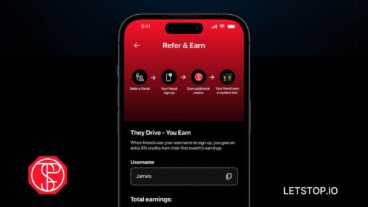MediaMind, probably the most successful Israeli company you’ve never heard of, streamlines digital ad campaigns for companies like Fox, Sony, McDonald’s and Toyota.

When Fox Entertainment launched the DVD version of its blockbuster hit Avatar, the company had a problem. Fox needed to simultaneously bring the product to 19 different countries with hundreds of advertisements in each region. Working with each placement individually would have been a nightmarish impossibility, compounded by the modern reality of multiple delivery platforms: TV, radio, print and, increasingly, the Internet. Not to mention all the follow-up reports and mountains of data.
To manage such a complex process, Fox turned to MediaMind, an Israeli powerhouse that streamlines the delivery and measurement of digital ad campaigns. MediaMind allowed Fox to place and monitor all of its on-line advertisements from a single control panel, saving both money and a whole lot of hassle.
MediaMind may be the most successful Israeli company you’ve never heard of. In 2009, the company’s software connected more than 7,000 brands – like Sony, Toyota and McDonald’s – to more than 5,000 web publishers, including MSN, AOL and MySpace, in 55 countries. The firm has 350 staffers in 35 offices around the world. With headquarters in New York, 120 people work in Israel in research and development, and there’s some international marketing and admin.
Exploiting the dotcom meltdown
This summer, MediaMind was thrust into the news, raising $57.5 million on NASDAQ in August at a post-money valuation of $206 million. The company reported that revenue rose 36 percent in the first half of 2010 to $37.2 million with net profit of $3.4 million.
How did MediaMind grow to have revenues most Israeli start-ups can only dream of? ISRAEL21c caught up with Amit Rahav, the company’s vice president of marketing, based in Ra’anana near Tel Aviv, who explained that MediaMind turned the dot.com meltdown of the early 2000s into an on-line opportunity.
“At the time, there were all of these on-line publishers with ridiculous valuations who never worried about monetization, who suddenly became very hungry to make money,” says Rahav. MediaMind had built a platform that would allow brands to create rich media advertisements – video, animation and sound – that was mostly unheard of then.
“Simple banners weren’t doing anything, they weren’t working,” Rahav explains. But MediaMind’s rich media product – called EyeBlaster – “had 30 times ROI [return on investment] and delivered a very impressive click-through rate.”
In the high-tech business, investors always ask, “Are you building a company or just a tool?” EyeBlaster fell into the latter category, and MediaMind quickly ramped up to create an end-to-end platform. It’s a platform that not only allows advertisers to create ads, but to deliver them as well, and then to track analytics. You learn who’s clicking on the banners, where users go next, and which site placements are the most successful.
Bringing experience to every campaign
All of this data also allows MediaMind to help advertisers to build a “media plan.” For example, an advertiser may want to create a campaign to reach a certain target audience. “We can show what has worked in the past with similar audiences and objectives,” Rahat tells ISRAEL21c. “We can say how successful ads have been in a particular subject on, say, just Yahoo, or we can look at people in certain regions like California.” The system is entirely self-service. “The top opportunities automatically jump to the front of the list.”
A new MediaMind “smart versioning” product allows advertisers to go one step further and change their “creative” (what the ad looks like) on-the-fly without having to go back to the developer. “If you want to show the skyline of Boston instead of Detroit in the background, or change colors – all things that are proven to increase the relevance of the campaign – the cost for creating all these different versions manually will be too high,” Rahav points out.
MediaMind is not the biggest player in the industry – that honor goes to DoubleClick, long the 300-pound gorilla in the room. But DoubleClick was bought by Google a few years back. And even though DoubleClick hasn’t changed its focus to be more Google-centric, “a media buyer always wants the platform to be like Switzerland, to be neutral, with not even a suspicion of bias,” Rahav quips.
The Holy Grail for both companies, though, is mobile – serving up ads to the rapidly increasing numbers of iPhones and Android devices, not to mention tablets like the iPad. That market is owned currently by Apple’s iAd and to a lesser extent Google’s AdMob. “We see iAd as a platform we’ll be servicing in the long term,” Rahav says, “but we’re not there yet.”
A key problem is that Apple’s system is still closed to companies like MediaMind, but Rahav is “confident that demand in the mobile space will open up to support third parties,” as has happened in the rest of the online advertising space.
A customer base of 5,000 and growing
MediaMind’s growth has taken time and resources. The company set up each of the 5,000 publishers it currently services one at a time, offering both technology and expert advice based on best practices from the tens of thousands of ad campaigns that it has run over the years. MediaMind makes money by taking a cut of the dollars the advertiser spends.
Has social media made a dent in existing online advertising? Rahav says the data still isn’t in. “It’s a growing area, but I don’t know if it’s at the expense of other areas.”
The market for online advertising still has plenty of room to grow. “People spend 50% of their time on digital media” like the Internet, Rahav says, “but only 14% of ad dollars are going there. The reason is mainly fragmentation. For TV, it’s a fairly easy process with a limited number of suppliers to work with and well-known ad formats. On-line, though, there are dozens of opportunities to advertise – banner ads, exchange networks, social media, mobile, different size formats.”
And, while smaller mom and pop shops can go straight to Facebook or Google using a relatively simple program like AdWords, “for large advertisers who need to reach tens of millions, it’s a real challenge,” Rahav says.
That challenge will only become more complex but MediaMind will keep on tackling it. And with its new IPO cash infusion, the company looks likely to begin to lead openly – and no longer as Israel’s best-kept secret.













